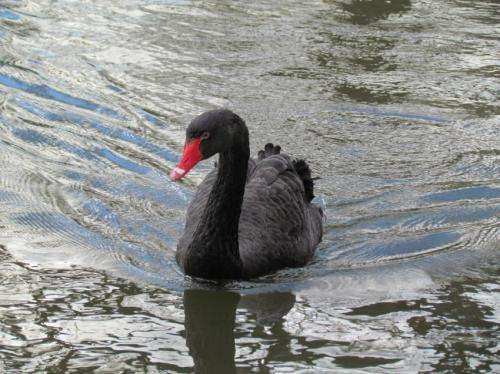Bird invaders 'moving in' to UK's nature reserves

A new study by scientists at the University of York and the RSPB Centre for Conservation Science has demonstrated that nature reserves and other areas specially protected for wildlife, as well as being vital for native species, are very important for helping European birds to expand their ranges into Britain naturally. The catch is that protected areas are also at increasing risk of invasion by species that have been introduced from further afield.
The research, published in the journal Diversity and Distributions, explores how the UK's special places for nature have been exploited by both non-native wetland birds such as the Black Swan, and species which have colonised the UK naturally, such as the Little Egret and the Mediterranean Gull.
Seven non-native wetland birds are now established in the UK. As they spread through UK counties, these species initially bred away from reserves and protected areas before showing an increasing association with reserves as their populations grew. In contrast, reserves provided important new homes for natural colonists to the UK, which then spread out as their populations grew.
First author, Jonathan Hiley, a PhD student in the Department of Biology at York, said: "Invasive wetland birds were introduced to the UK for ornamental or sporting purposes in public parks and private land. These now familiar species have apparently taken a liking to the high-quality habitat found in our protected areas."
While the presence of exotic species like the Black Swan and Egyptian Goose may be welcomed by some, this trend could have negative implications. "Invasions are becoming increasingly common across the World, and might threaten the survival of native species. It is essential that conservationists take note of these results and monitor the spread of non-natives," he added.
Co-author Professor Chris Thomas, of the Department of Biology at York, said:
"The challenge is to identify which of the non-native species are going to cause problems. The introduced North American Ruddy Duck disproportionately colonised protected areas and is a potential threat to the native European White-Headed Duck. In contrast, the colourful Mandarin Duck is less frequently associated with reserves, and is unlikely to cause ecological damage even when it does colonise them."
Co-author Dr Richard Bradbury, from the RSPB Centre for Conservation Science, said: "This is more evidence that investment in protected areas works, and its importance will not be diminished by climate change. It is reassuring that these places don't provide similar welcome mats for invading non-native species, but the subsequent pattern of movement into these areas shows that early action to tackle non-natives is vital."
The seven established non-native species in the UK are: Canada Goose Branta Canadensis; Egyptian Goose Alopochen aegyptiacus; Black Swan Cygnus atratus; Mandarin Duck Aix galericulata; Barnacle Goose Branta leucopsis; Ruddy Duck Oxyura jamaicensis and Red-crested Pochard Netta rufina.
More information: The paper 'Introduced and natural colonists show contrasting patterns of protected area association in UK wetlands' is published in Diversity and Distributions.
Journal information: Diversity and Distributions
Provided by University of York


















